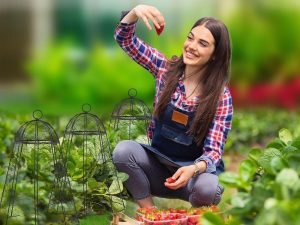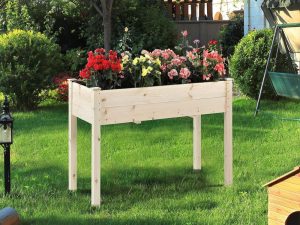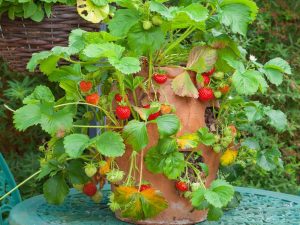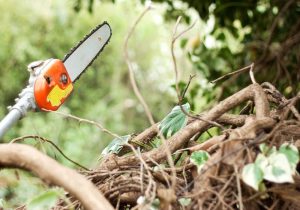Last Updated on March 27, 2024 by teamobn
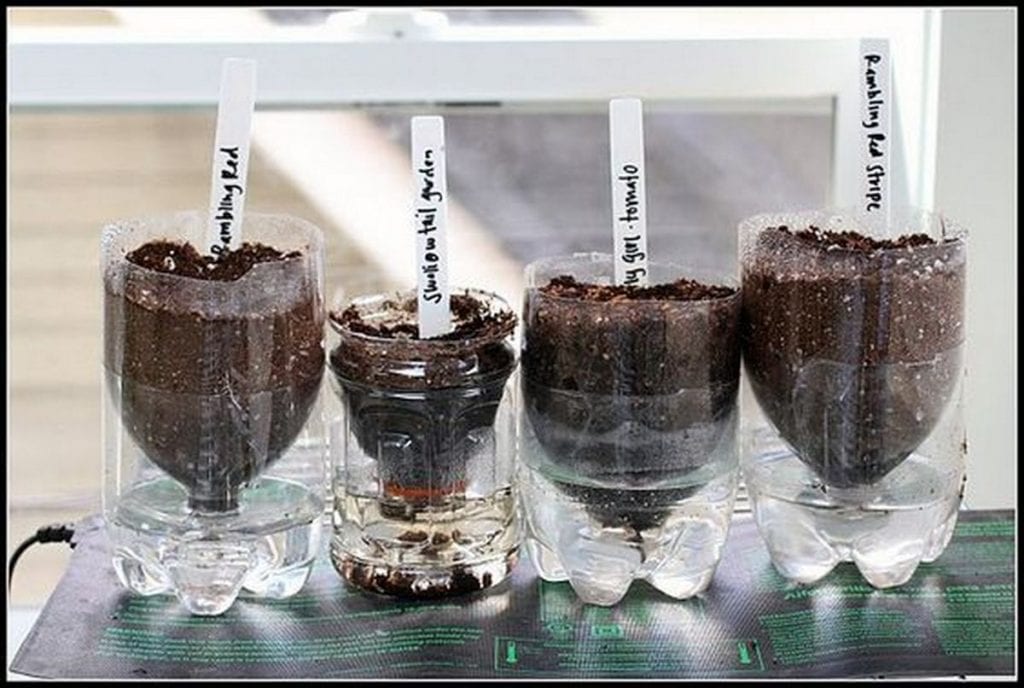
Growing plants require that you give them tender loving care. This is part of the reason why most people are hesitant to do so. If you’re planning on growing some plants indoors but you think you’re not ready for the commitment, here’s a great project that you will love. These DIY self-watering seed starter pots will be excellent for you.
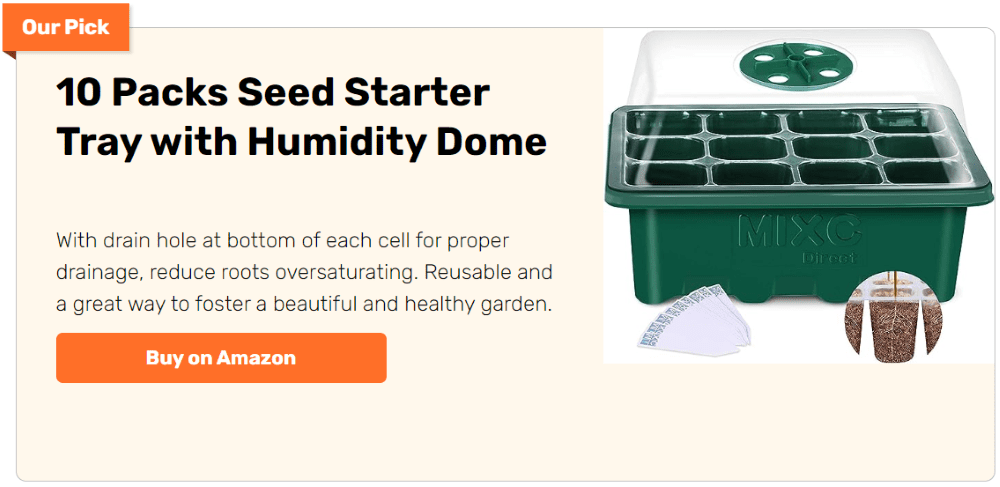
This is actually a very efficient method of watering plants. It’s easy to see the water level so you can pour water as needed and not have to check very often. Also, you can rest assured that the soil is always at the right moisture level.
These pots are easy to make – and inexpensive. And since you’ll be recycling those 2-liter plastic bottles, you’re doing good for the environment, too.
Making Self-Watering Seed Starter Pots
Contents
Materials
- 2-liter plastic bottles
- Potting soil
- Seeds
- Thick string or yarn
Tools
- Phillips screwdriver
- Hammer
- A sharp blade
Instructions
Step 1: Prepare the Plastic Bottles
- Clean the bottles. Ensure the 2-liter plastic bottles are empty, clean, and dry.
- Cut the bottles. Using the sharp blade, carefully cut the bottles in half. Aim for a cut around the midpoint or slightly above, so you have a deep enough base for the soil and roots.
Step 2: Create the Water Wicking System
- Poke holes in the cap. Use the Phillips screwdriver and hammer to make a few holes in the cap of the bottle. This will allow water to seep through slowly.
- Thread the string. Cut a length of thick string or yarn, about 1 to 2 feet long. Thread one end through the cap’s holes, pulling a few inches through. This string will act as a wick, drawing water up to the soil.
Step 3: Assemble the Pot
- Insert the top into the base. Flip the top half of the bottle (with the cap and string) upside down and insert it into the base half. The string should hang down into the bottom half, touching the bottom. This is where you’ll add water.
- Secure the two halves. If necessary, you can use tape or glue to secure the top half to the bottom, but this is usually not required.
Step 4: Add Soil and Seeds
- Fill with soil. Add potting soil into the top half of your new pot, filling it until there’s about an inch of space left at the top.
- Plant seeds. Follow the planting instructions for your chosen seeds, planting them at the correct depth in the soil.
- Water the soil. Initially, water from the top to ensure the soil is moist and the seeds are well-watered. This also helps to start the wicking action of the string.
Step 5: Maintain Your Self-Watering Seed Starter Pot
- Fill the reservoir. Pour water into the bottom half of the bottle, ensuring the string can wick the water up to the soil.
- Check water levels regularly. Keep an eye on the water level in the bottom half of the bottle, refilling as necessary to ensure it doesn’t run dry.
Step 6: Transplanting
- Watch for growth. Once your seedlings have grown and are strong enough to be transplanted, you can move them to a larger pot or your garden. Be gentle during the transplanting process to avoid shock.
Click on any image to start the lightbox display. Use your Esc key to close the lightbox.
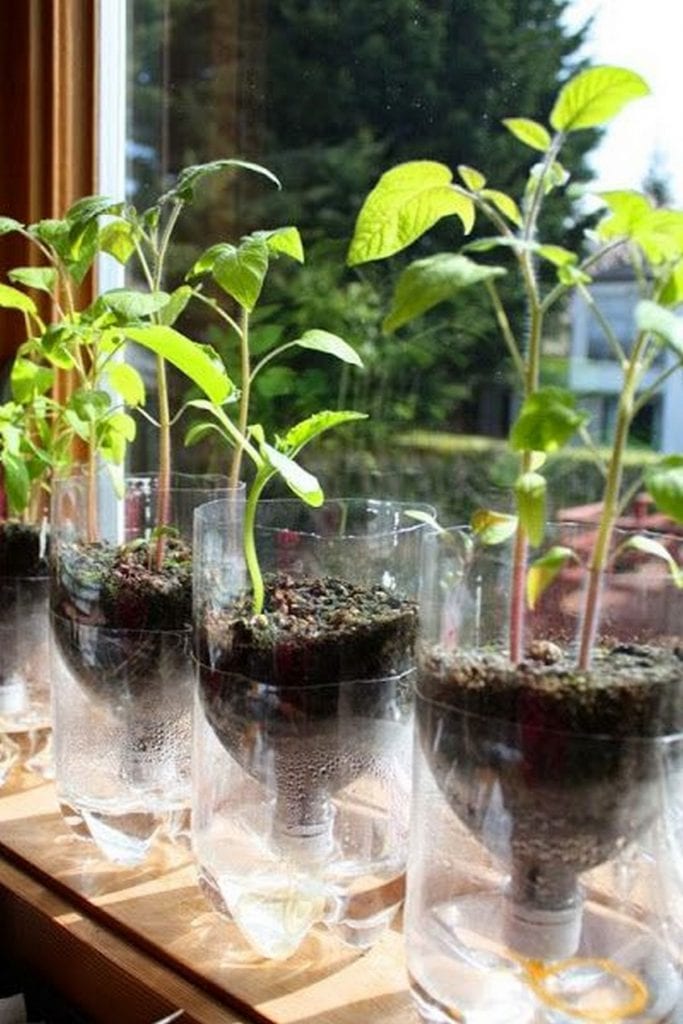
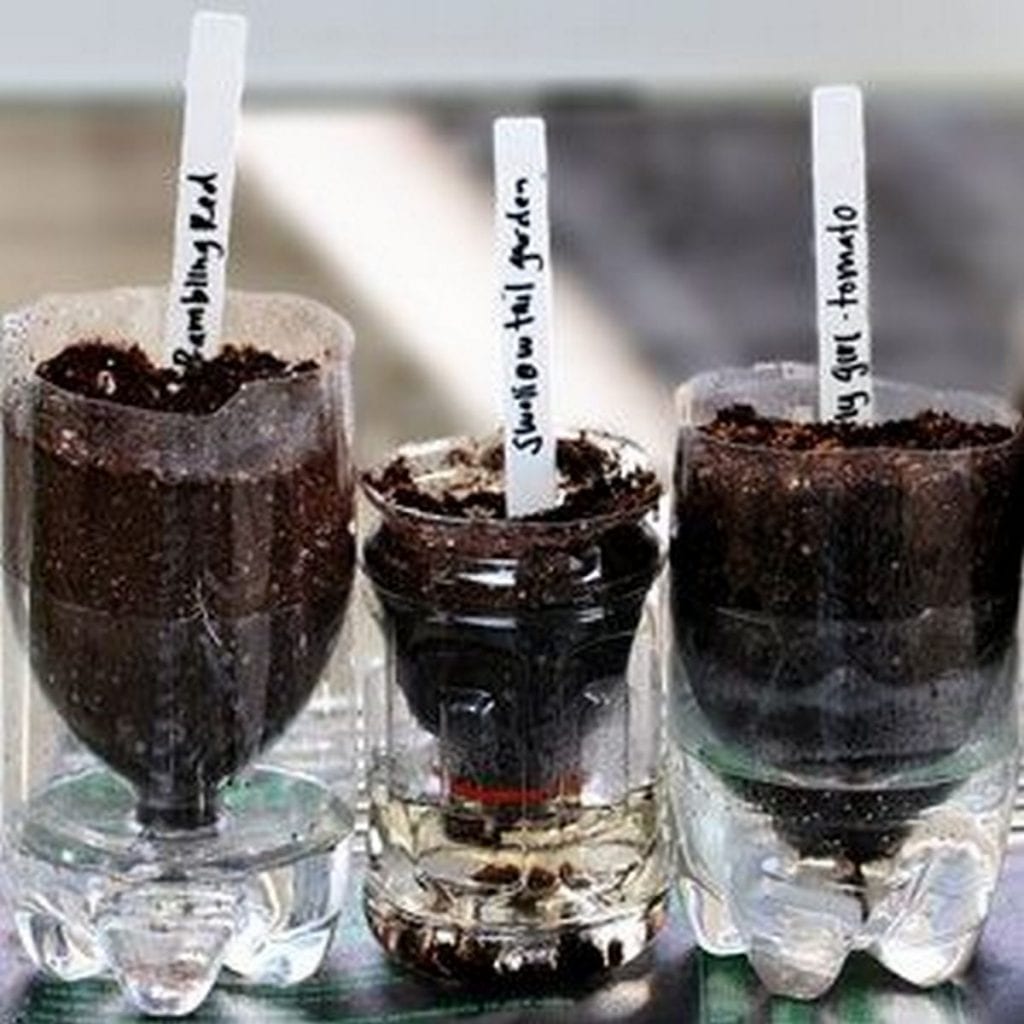
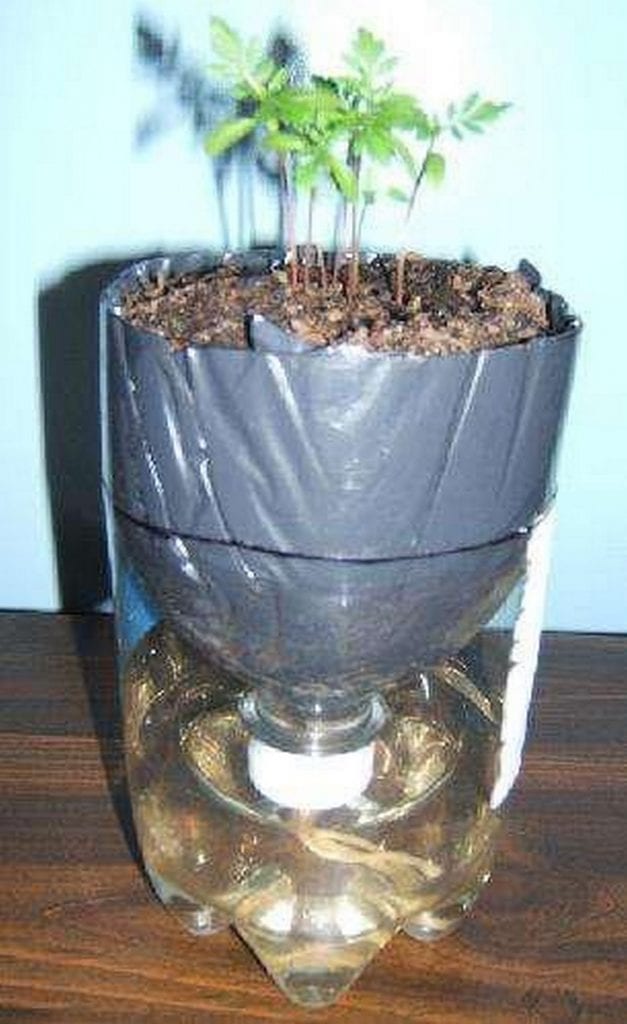
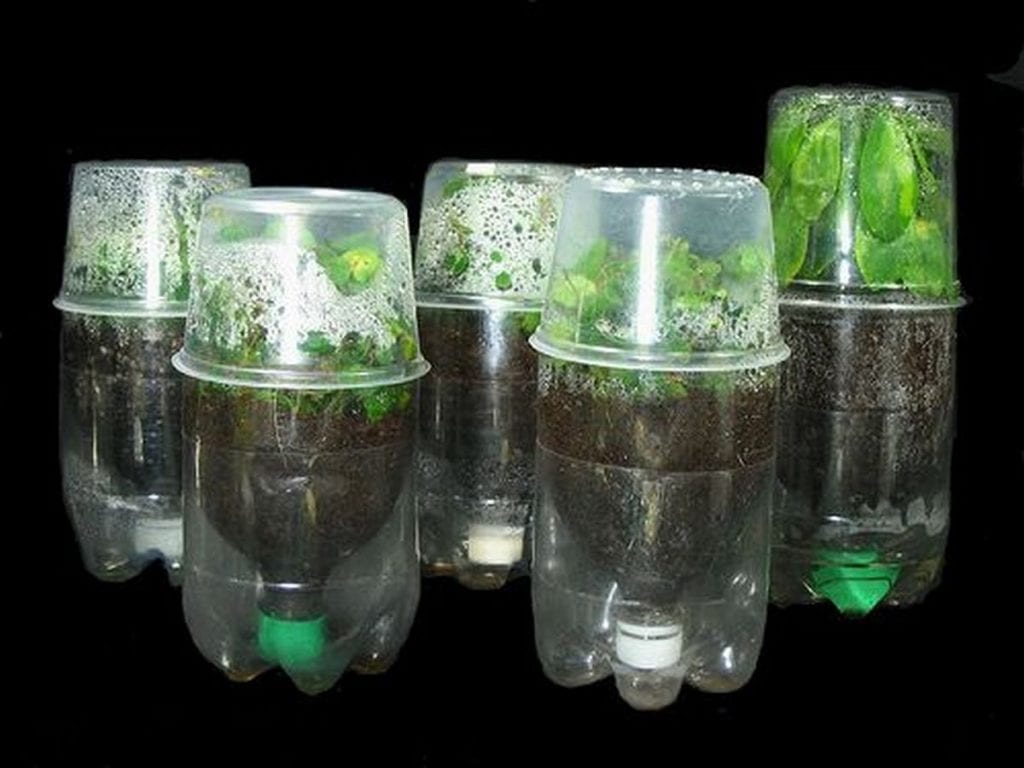

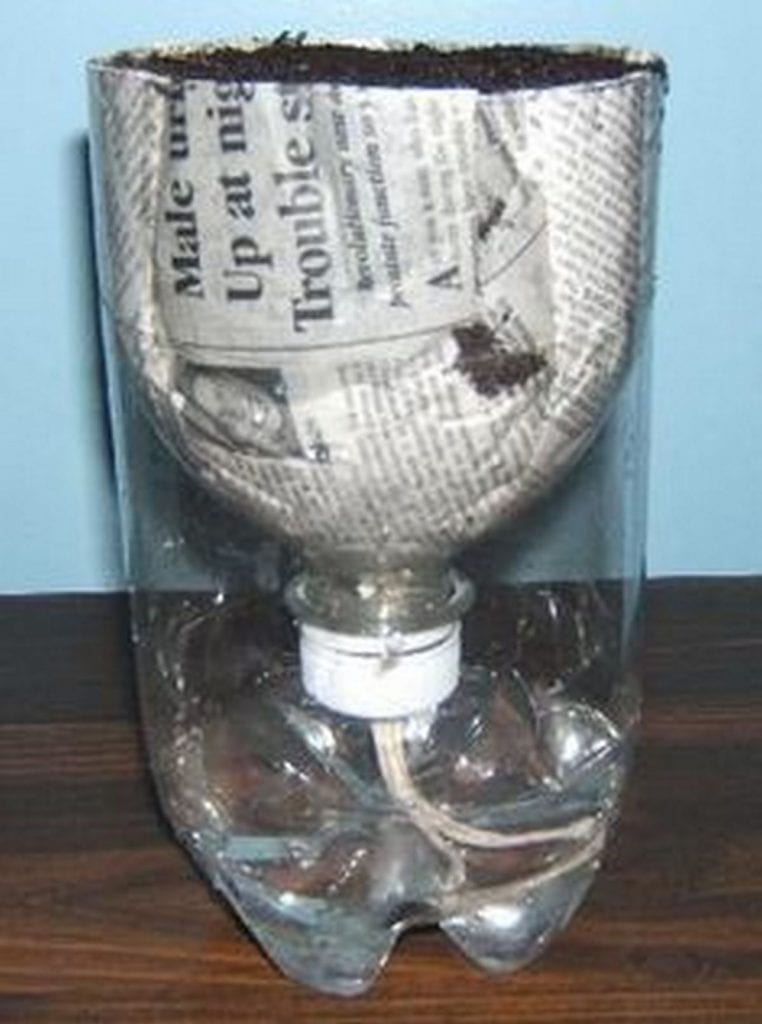
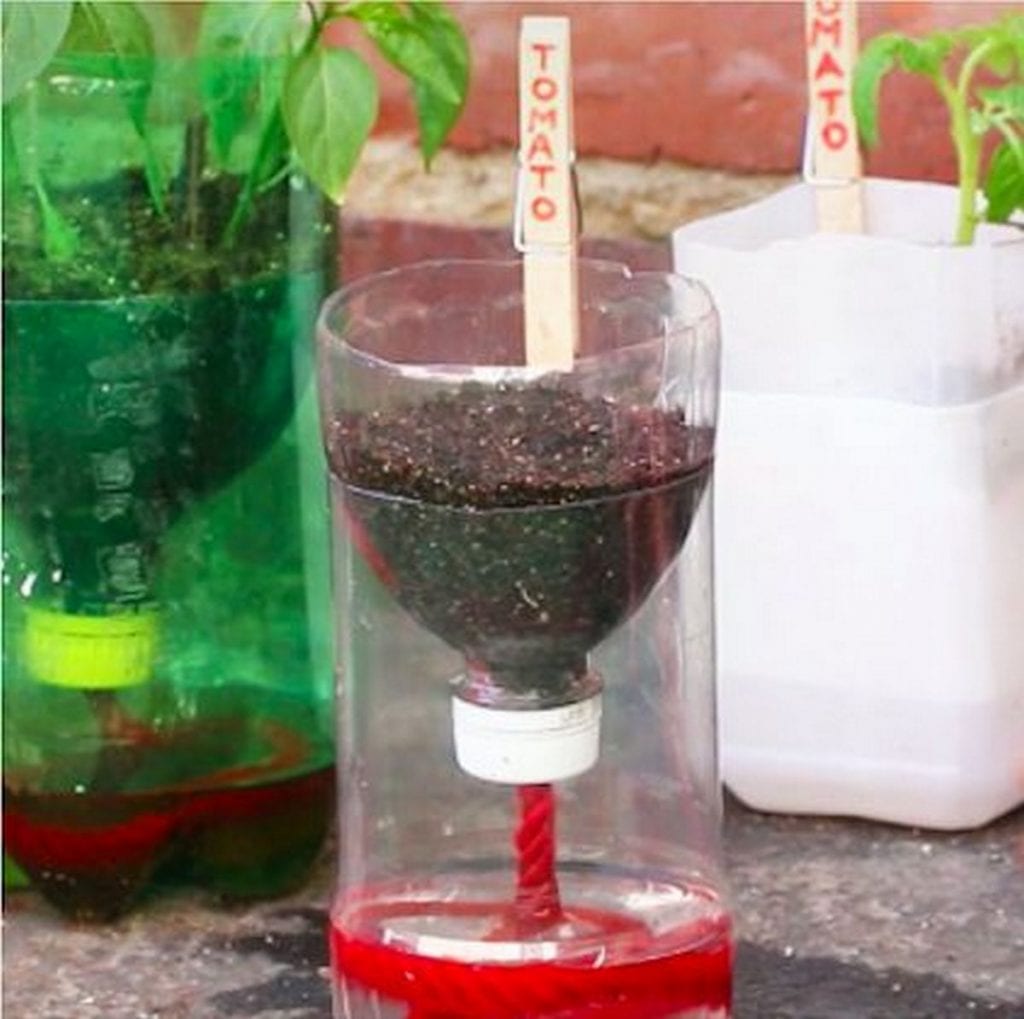
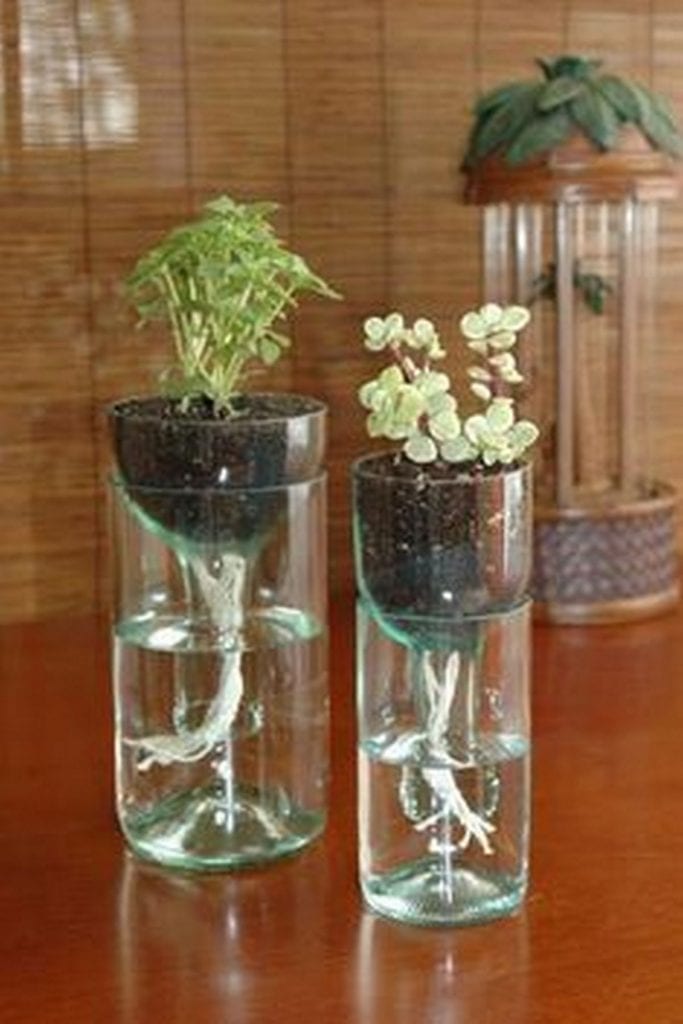
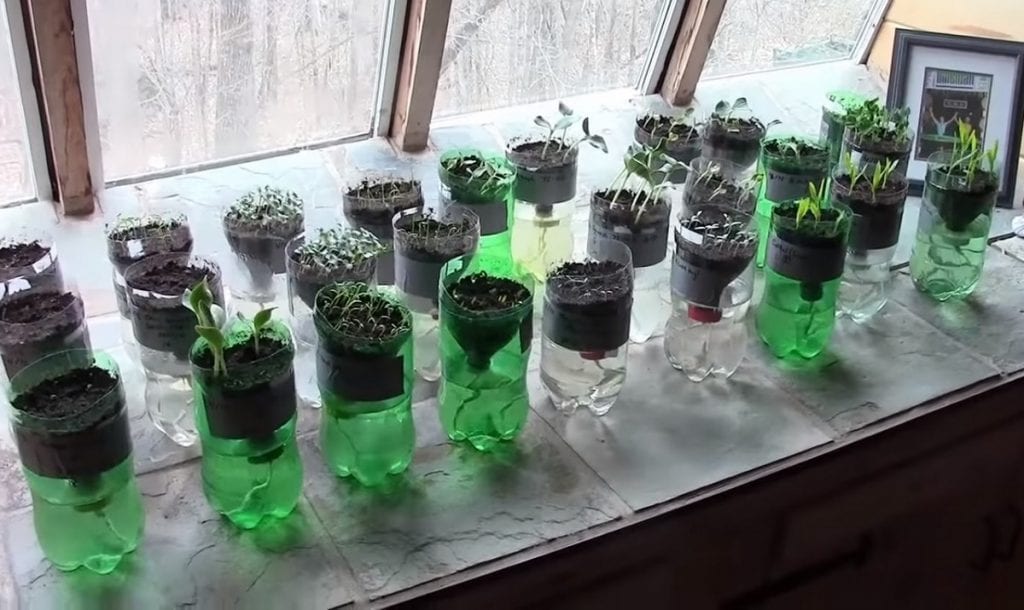
For visual instructions on how to make your self-watering seed starter pots, check out the video below.
Benefits of Self-Watering Systems for Seed Starting
Your self-watering seed starter pots offer a unique solution in simplifies the seed starting process. These cheap plastic planters streamline the germination process and ensure your seeds receive the optimal level of moisture needed for successful growth. Let’s dive into the benefits of using self-watering seed starter pots.
Consistent Moisture Control
One of the most significant advantages of your self-watering seed starter pots is their ability to always keep the seeds moist. Seeds and young plants are particularly sensitive to water levels. Too much or too little can hinder their growth. Self-watering seed starter pots eliminate this concern by providing a constant water supply directly to the soil. This consistent moisture control is vital for healthy seed germination and early plant development.
Reduced Watering Frequency
Self-watering seed starter pots require less frequent watering compared to traditional planting methods. This is because the water reservoir in the bottom of the pot ensures water is available when the plant needs it. You’re going to spend less time on watering chores and more time to focus on other gardening tasks.
Prevention of Overwatering and Underwatering
Overwatering and underwatering are common problems that can severely affect seed germination and plant health. Self-watering seed starter pots are designed to mitigate these issues. You’re going to avoid drying out your seeds as they germinate or drown them with too much water thanks to your self-water seed starter pots water retention function.
Encourages Strong Root Growth
Self-watering seed starter pots encourage deeper, healthier root growth. The design of these pots encourages roots to grow downward in search of water, which helps to establish a strong root system. A robust root system is essential for the overall health and longevity of the plant.
Eco-Friendly and Sustainable
Many self-watering seed starter pots are made from recycled materials, making them an eco-friendly choice for gardeners concerned about sustainability. Additionally, these pots reduce waste by optimizing water usage, contributing to a more sustainable gardening practice.
Time and Effort Savings
Gardeners often find that self-watering seed starter pots save time and effort. Since these pots take care of your watering, they minimize the need for daily plant care. This is especially beneficial for busy individuals or those who travel frequently, ensuring their seeds and seedlings continue to thrive in their absence.
Ideal for Beginners
For those new to gardening, self-watering seed starter pots are an excellent tool. They simplify the seed starting process, making it less intimidating for beginners. By removing the guesswork associated with watering, these pots provide a more forgiving environment for novice gardeners to learn and succeed.
Your self-watering seed starter pots offer numerous benefits that can enhance the seed starting process. From consistent moisture control to eco-friendly practices, these pots are a valuable tool for gardeners of all levels. Whether you’re a seasoned gardener or just starting out, self-watering seed starter pots can help ensure your gardening success.

Transitioning from Starter Pots to Larger Self-Watering Systems
Scaling up your gardening efforts from small beginnings to more ambitious projects is a rewarding journey. Starting with self-watering seed starter pots is an excellent way to kickstart this process. These pots provide an ideal environment for seed germination. As your plants grow, you might consider moving them to larger self-watering systems.
Here’s how to make that transition smoothly.
Starting with Self-Watering Seed Starter Pots
Self-watering seed starter pots offer a unique advantage for beginners and experts alike. They ensure seeds receive constant moisture, crucial for germination. This method simplifies the early stages of plant care.
Knowing When to Scale Up
Observe your plants in their self-watering seed starter pots. Once they outgrow these pots, it’s time to think bigger. Look for signs like roots emerging from the bottom or plants seeming too large for their current space.
Choosing the Right Time
Timing is key when transitioning from self-watering seed starter pots to larger systems. The best time is just before the start of the plant’s next growth phase. This ensures minimal disruption to its development.
Selecting Larger Self-Watering Systems
There are many options for larger self-watering systems. Choose based on the size of your plants and the space you have available. Ensure the new system can accommodate the mature size of your plants.
Transferring Your Plants
Moving plants from self-watering seed starter pots to a bigger system requires care. Gently remove the plant, keeping the root ball intact. Place it in the new system, and fill around it with soil.
Adjusting Watering Practices
Larger self-watering systems may require adjustments in how you water your plants. Monitor the water reservoir and adjust your watering schedule as needed to ensure plants receive the right amount of moisture.
Monitoring and Maintenance
After the transition, keep a close eye on your plants. They may need time to adjust to their new environment. Check the moisture level of the soil regularly and inspect plants for signs of stress.
The Benefits of Scaling Up
Moving from self-watering seed starter pots to larger self-watering systems has many benefits. It allows for more robust plant growth, higher yields, and less frequent watering. Embrace this next step in your gardening journey with confidence.
By scaling up from self-watering seed starter pots to larger self-watering systems, you’re not just growing plants. You’re expanding your gardening skills and increasing the potential for more abundant, healthy plant growth.
Conclusion
Creating self-watering seed starter pots is a rewarding and efficient approach to gardening that benefits both novices and seasoned gardeners. These innovative pots provide consistent moisture essential for seed germination, simplifying plant care during the critical early stages. As a sustainable solution, they represent a smart choice for environmentally conscious individuals looking to cultivate their green thumb.



